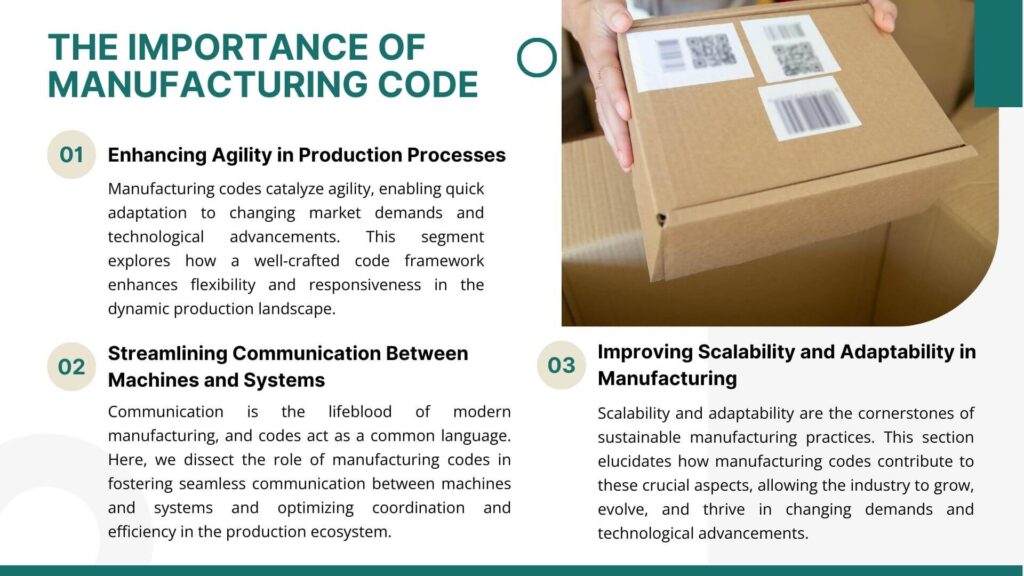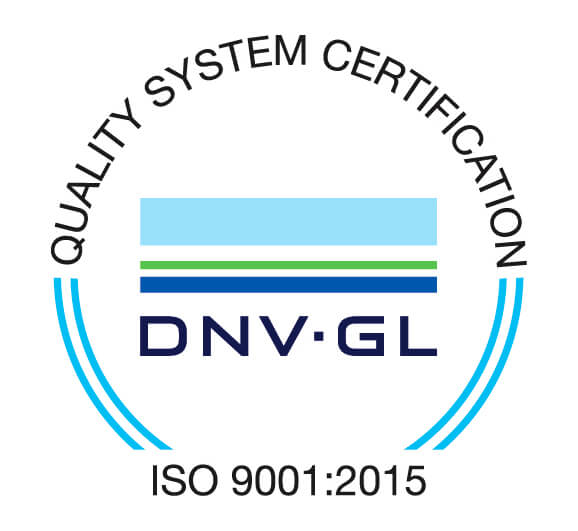The manufacturing industry has undergone a remarkable transformation over the years, with technological advancements, globalization, and changing consumer demands shaping its dynamic landscape.
The traditional contours of manufacturing have given way to a more interconnected and technologically driven environment. From the Industrial Revolution to today, the sector has continually adapted to emerging trends and embraced transformative technologies. The integration of automation, artificial intelligence, and data analytics has redefined production processes, enhancing productivity and precision.
Innovation stands at the forefront of this evolutionary journey, propelling manufacturing into new frontiers. From smart factories to sustainable practices, the industry has harnessed the power of innovation to meet the challenges of the 21st century. Cutting-edge technologies such as 3D printing, the Internet of Things (IoT), and robotics have streamlined operations and opened avenues for unprecedented customization and efficiency.
A manufacturing code is a set of ethical, sustainable, and technological principles that guide industry players toward responsible practices, shaping the future of manufacturing and driving responsible practices.
Table of Contents
ToggleUnderstanding Manufacturing Codes

A manufacturing code, often known as a product code, is a unique string of numbers, letters, or both assigned to a specific product during manufacturing. This code serves as an identifier, allowing businesses to track and control inventory, trace products back to their origination point, and provide critical information about the product, including its manufacturing date, location, batch number, and other relevant data.
Manufacturing codes hold immense significance in the modern industry. They ensure traceability, a facet that is crucial in quality control and product recalls. If any issues arise post-production, the manufacturing code allows the manufacturer to identify the product batch and rectify the problem swiftly. Furthermore, these codes also support compliance with various industry regulations and standards, upholding product safety and customer trust.
From a broader perspective, manufacturing codes are more than just a tracking tool – they embody the essence of intelligent and responsible manufacturing. They incorporate sustainability, ethics, and technology considerations, culminating in practices that are profitable and align with the broader goals of societal well-being and environmental stewardship. Thus, manufacturing codes are integral to the industry’s evolution towards a more conscious and innovative future.
Historical Perspective
The concept of manufacturing codes has its roots in the early stages of industrialization. Back then, manufacturers used simple markings or stamps to differentiate between products from different batches or production runs. Although effective for its time, this rudimentary system was limited in its capacity to provide detailed information about the product.
The advent of barcoding in the mid-20th century revolutionized the concept of product identification. It allowed manufacturers to encode information into a series of lines readable by machines. This expedited the checkout process in retail settings and improved inventory management, paving the way for accurate demand forecasting and efficient resource allocation.
Manufacturing codes have evolved in the digital age, leveraging technological advancements to ensure real-time tracking and traceability. Today, we see the use of sophisticated systems like Quick Response (QR) codes, Radio Frequency Identification (RFID) tags, and the Internet of Things (IoT) to provide comprehensive information about a product right from production to end-use.
These systems encompass data about the manufacturing process and include details about raw materials used, environmental impact, ethical considerations, and more. Therefore, this modern approach to a manufacturing code represents a shift towards transparency, accountability, and sustainable practices in the manufacturing industry.
Impact on Efficiency and Productivity
Manufacturing codes profoundly impact efficiency and productivity within the industrial sector. By facilitating precise inventory management, they reduce wastage and optimize resource utilization, leading to cost savings and improved operational efficiency. With clear visibility of products at each stage of the production and supply chain, manufacturers can accurately forecast demand and plan accordingly, enhancing their ability to meet customer expectations without overproduction or stockouts.
On the productivity front, manufacturing codes enable faster identification and resolution of issues, limiting disruptions and minimizing downtime. Suppose a defect is detected in a particular product batch. In that case, the specific manufacturing code allows prompt isolation of the affected items, preventing further spread of the problem and ensuring uninterrupted production. This ability to swiftly react to potential issues significantly bolsters productivity and maintains high levels of quality assurance.
Furthermore, the wealth of data embedded within these codes can be leveraged for continuous improvement. Manufacturers can analyze this data to gain insights into their processes, identify areas of inefficiency, and implement strategic improvements, thereby driving productivity. Hence, while primarily a tool for product identification and traceability, manufacturing codes are increasingly seen as instrumental in enhancing operational efficiency and productivity in the manufacturing industry.
The Age of Low-Code Transformation
In the dynamic manufacturing world, the need for agile and efficient digital solutions is more prevalent than ever. Low-code development has emerged as a transformative force, enabling manufacturers to build and customize applications quickly with minimal hand-coding. It offers a streamlined approach to developing business applications, reducing the complexity associated with traditional software development.
Key Features and Benefits of Low-Code Solutions
Low-code solutions come packed with essential features that drive significant benefits for the manufacturing sector. They include the following advantages:
- Simplicity: Low-code platforms provide a user-friendly interface with drag-and-drop functionality, enabling teams to develop applications with minimal coding knowledge.
- Speed: The reduced coding requirement accelerates the development process, allowing for quicker deployment of applications.
- Flexibility: Low-code solutions enable easy customization, allowing manufacturers to tailor applications to suit their specific processes and needs.
- Cost-effectiveness: These solutions minimize the need for skilled developers, thus reducing development costs.
- Scalability: Low-code platforms can scale applications quickly per the business’s changing needs.
- Integration: They seamlessly integrate with existing systems, preventing disruptions to current workflows.
- Compliance: Low-code platforms are designed to adapt quickly and easily to regulatory changes, ensuring that all applications comply with industry-specific laws and regulations.
These features combine to create a more efficient, flexible, and cost-effective approach to software development, making low-code solutions an ideal choice for forward-thinking manufacturers.
What Sets Manufacturing Codes Apart?
Manufacturing codes play a unique role in the manufacturing industry, going beyond essential product identification to enable effective inventory management, quality assurance, and process optimization. Let’s delve into the specifics of coding in a manufacturing context, explore how these codes can be tailored to cater to industry-specific needs and examine some real-world examples of manufacturing codes in action.
Specifics of Coding in a Manufacturing Context
Codes are unique identifiers for each product, batch, or production run in a manufacturing setting. They contain essential information about the item, such as the manufacturing date, batch number, location of production, and sometimes even the materials used. This data is often encoded into barcodes or QR codes, readable by machines, for quick and accurate access.
Tailoring Codes to Industry-Specific Needs
Manufacturing codes can be customized to meet the needs of specific industries. For instance, in the pharmaceutical industry, the codes may contain detailed information about the ingredients and expiration dates. The food and beverage industry might include nutritional information and allergen warnings in their codes. Similarly, in the automotive industry, parts and components can be traced back to their source using unique codes, aiding in quality control and recall efforts.
Real-World Examples of Manufacturing Codes in Action
Manufacturing codes are not just a mere amalgamation of numbers and letters but hold significant value within the industrial sector. They encapsulate crucial product information as unique identifiers, contributing to efficient inventory management and facilitating traceability and quality control.
- Amazon’s Use of Barcodes: Amazon utilizes unique barcodes for each warehouse product, streamlining inventory management and enhancing order accuracy. This efficient system allows for seamless tracking and identification of items at every stage of the supply chain.
- Zara’s RFID Tags: Zara, the renowned fashion retailer, embraces RFID tags on all its items. By doing so, Zara ensures real-time inventory tracking, enabling efficient stock management and seamless customer checkout experiences.
- Boeing’s Data Matrix Codes: Boeing, the aerospace giant, employs data matrix codes on its aircraft parts. This technology enables precise tracking of the life cycle of each part, facilitating effective maintenance planning and ensuring optimal performance and safety of its aircraft.
- Pharmaceutical Serialization: Many pharmaceutical companies implement serialization to combat counterfeit products and provide traceability. By embedding unique codes on each medicine pack, pharmaceutical companies can track and authenticate products throughout the supply chain, safeguarding patient safety and maintaining product integrity.
The Importance of Manufacturing Code
In the intricate dance of manufacturing, the importance of adhering to a well-defined manufacturing code cannot be overstated. This section delves into the multifaceted significance of manufacturing codes, shedding light on their pivotal role in enhancing agility, streamlining communication, and fostering scalability within production processes.

Enhancing Agility in Production Processes
Manufacturing codes catalyze agility, enabling quick adaptation to changing market demands and technological advancements. This segment explores how a well-crafted code framework enhances flexibility and responsiveness in the dynamic production landscape.
Streamlining Communication Between Machines and Systems
Communication is the lifeblood of modern manufacturing, and codes act as a common language. Here, we dissect the role of manufacturing codes in fostering seamless communication between machines and systems and optimizing coordination and efficiency in the production ecosystem.
Improving Scalability and Adaptability in Manufacturing
Scalability and adaptability are the cornerstones of sustainable manufacturing practices. This section elucidates how manufacturing codes contribute to these crucial aspects, allowing the industry to grow, evolve, and thrive in changing demands and technological advancements.
Challenges and Considerations
As insightful as manufacturing codes can be, their implementation is not devoid of challenges. These hurdles may encompass technical, operational, or strategic aspects that can hamper coding systems’ smooth integration into existing manufacturing processes. Adaptability, readiness for change, and a comprehensive system understanding are essential to navigate these challenges.
Potential Challenges in Implementing Manufacturing Codes
Implementing manufacturing codes involves complex procedures that may pose several challenges. These challenges range from technical issues related to integrating new systems with existing ones to operational problems, such as training staff to use these systems, and strategic issues concerning data security and compliance with industry-specific regulations.
- Technical integration issues: Ensuring seamless integration of systems and applications, resolving compatibility challenges, and optimizing performance.
- Staff training and adaptation: Providing comprehensive training programs to equip employees with the necessary skills and knowledge to utilize new technologies and processes effectively.
- Data security concerns: Implementing robust security measures to protect sensitive information from unauthorized access, breaches, and cyber threats.
- Regulatory compliance: Adhering to relevant laws, regulations, and industry standards to ensure compliance and mitigate legal and financial risks.
Strategies to Overcome Obstacles
While the challenges are considerable, they are certainly not insurmountable. Manufacturers can effectively address these hurdles with a well-defined strategy and a diligent approach. This involves the efficient use of technology, robust training programs, a focused approach to data security, and compliance with all relevant regulations.
- Leveraging technology for seamless integration: Businesses can streamline their integration processes by utilizing cutting-edge technology, ensuring efficient and smooth operations across various systems and platforms.
- Comprehensive training programs for enhanced productivity: Implementing robust training programs equips employees with the necessary skills and knowledge to excel in their roles, resulting in improved productivity and performance.
- Addressing data security proactively to safeguard sensitive information: Taking proactive measures to address data security concerns helps protect valuable and confidential data from unauthorized access, ensuring the privacy and trust of customers and stakeholders.
- Ensuring regulatory compliance to meet industry standards: Adhering to regulatory requirements and industry standards is crucial for businesses to operate legally and ethically, fostering trust among customers and stakeholders while minimizing legal risks.
Addressing Security Concerns in Manufacturing Codes
With the ever-growing emphasis on data security, ensuring the confidentiality and integrity of the information contained in a manufacturing code becomes paramount. Implement adequate measures to mitigate any data breaches or unauthorized access risks. This security-centric approach can help build trust among stakeholders and ensure the smooth and secure functioning of the manufacturing process.
- Implementing robust encryption techniques: Protect sensitive data by employing strong encryption algorithms and protocols, such as AES or RSA, to safeguard information from unauthorized access.
- Regularly updating and patching systems: Stay up-to-date with the latest software and security patches to address vulnerabilities and reduce the risk of exploitation by malicious actors.
- Ensuring access control and authentication: Implement strict access control measures, such as multi-factor authentication and role-based access controls, to verify and grant appropriate access levels to authorized users only.
- Conducting regular security audits: Perform periodic security audits to assess the effectiveness of existing security measures, identify potential weaknesses, and take necessary actions to mitigate risks and enhance overall security posture.
Future Trends and Innovations

As we forge ahead into the heart of the 21st century, the manufacturing industry stands on the brink of a new era, buoyed by the rapid advancements in technology and digitalization. The future of manufacturing codes and their role in the production landscape is set to witness significant transformations. Emerging technologies and digital trends are poised to revolutionize these codes, enhancing their functionality, efficiency, and the overall productivity of manufacturing processes.
Emerging Technologies Influencing the Future of Manufacturing Codes
The advent of new technologies is spearheading changes in how manufacturing codes are designed, implemented, and utilized. These technological advancements are creating possibilities for more efficient, accurate, and secure coding systems. The following list outlines some of the key emerging technologies that are set to influence the future of manufacturing codes:
- Internet of Things (IoT)
- Big Data Analytics
- Cloud Computing
- Cyber-Physical Systems
- Blockchain Technology
Predictions for the Role of Manufacturing Codes in the Next Decade
As we approach a new decade, manufacturing codes are predicted to play an increasingly pivotal role within the industry. Leveraging the power of digital tools and innovative technologies, these codes will be paramount in enhancing operational efficiency, promoting scalability, and improving the overall productivity of manufacturing processes. Here are a few predictions for the role of manufacturing codes in the next decade:
- Enhanced inter-machine communication
- Increased operational efficiency
- Improved quality control
- Greater adaptability and scalability
- More secure and robust data protection
How the Integration of AI and Machine Learning Will Impact Manufacturing Codes
Artificial Intelligence (AI) and Machine Learning (ML) are powerful technologies transforming various industries, and manufacturing is no exception. Integrating AI and ML into manufacturing codes facilitates more efficient, reliable, and secure communication between machines, systems, and processes. Some of the potential implications of this integration include:
- Development of adaptive manufacturing codes
- Automated error detection and correction
- Prediction and prevention of system failures
- Enhanced security through AI-driven encryption and threat detection algorithms
- Streamlined process optimization through predictive analytics.
Frequently Asked Questions (FAQs)
Q1: Why are manufacturing codes necessary in the supply chain?
Manufacturing codes are essential in the supply chain as they provide critical information about a product’s origin, manufacturing date, and batch details. These details can be used to track and trace products throughout the supply chain, essential for managing inventory, ensuring product quality, and conducting efficient recalls if needed.
Q2: How are manufacturing codes generated?
Manufacturing codes are typically generated through automated systems that use specific algorithms to create unique identifiers for each product. These codes often incorporate the production date, line, and batch number. The exact method of generation can vary depending on the specific needs and requirements of the manufacturer.
Q3: Can manufacturing codes be tampered with?
In theory, any code can be tampered with or replicated. However, implementing robust encryption techniques and strict access control measures can significantly decrease the risk of unauthorized access or manipulation of manufacturing codes. Regular security audits are also crucial in identifying and addressing potential vulnerabilities.
Take Advantage of Low-code Development with DATAMYTE
DATAMYTE is a quality management platform with low-code capabilities. Our Digital Clipboard, in particular, is a low-code workflow automation software that features a workflow, checklist, and smart form builder. This tool lets you seamlessly configure, manage, and integrate your manufacturing codes into your processes.
DATAMYTE also lets you conduct layered process audits, a high-frequency evaluation of critical process steps. This audit focuses on areas with the highest failure risk or non-compliance. Conducting LPA with DATAMYTE lets you effectively identify and correct potential defects before they become major quality issues.
With DATAMYTE, you have an all-in-one solution for managing and optimizing your manufacturing codes, ensuring maximum efficiency, security, and quality control in your operations. As technology evolves, DATAMYTE will continue to innovate and provide solutions that empower manufacturers to stay ahead of the curve. Book a demo now to learn more.
Conclusion
Emerging technologies like IoT, Big Data Analytics, and AI are substantially influencing the future of manufacturing codes, bringing about more efficient, accurate, and secure coding systems. These codes, far from being simple identifiers, are crucial agents of change in the manufacturing industry, playing a pivotal role in supply chain management and quality control.
Their transformative power is witnessed in enhancing operational efficiency, promoting scalability, and improving the overall productivity of manufacturing processes. With the integration of AI and Machine Learning, the potential for adaptive manufacturing codes, automated error detection, and predictive system failure prevention comes into play.
As we journey into a new era of digital evolution, it is incumbent upon businesses to harness the power of these innovative technologies and manufacturing codes. Embracing this innovation will give them a competitive edge and bolster their stand in adapting to the dynamically changing industrial landscape.



